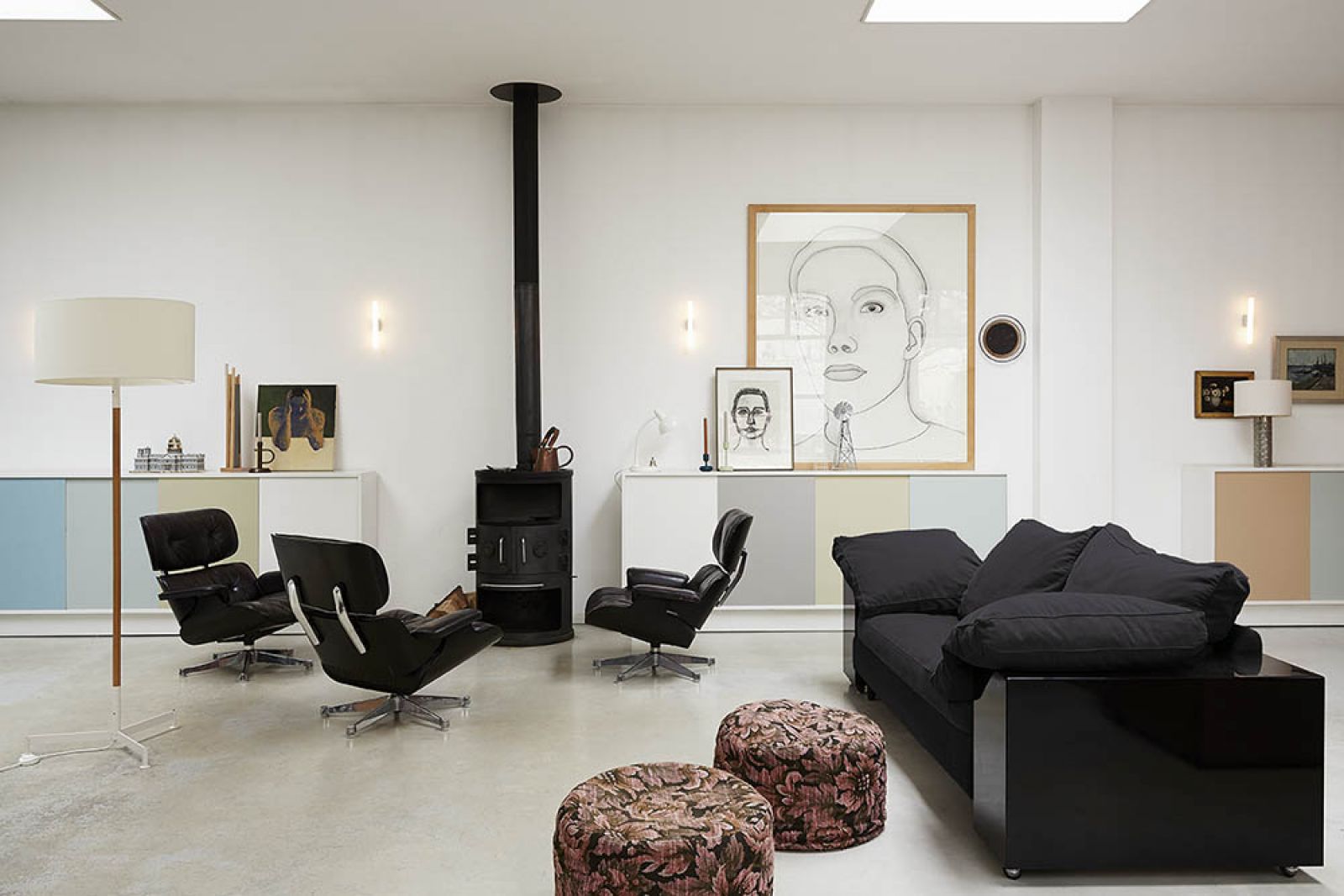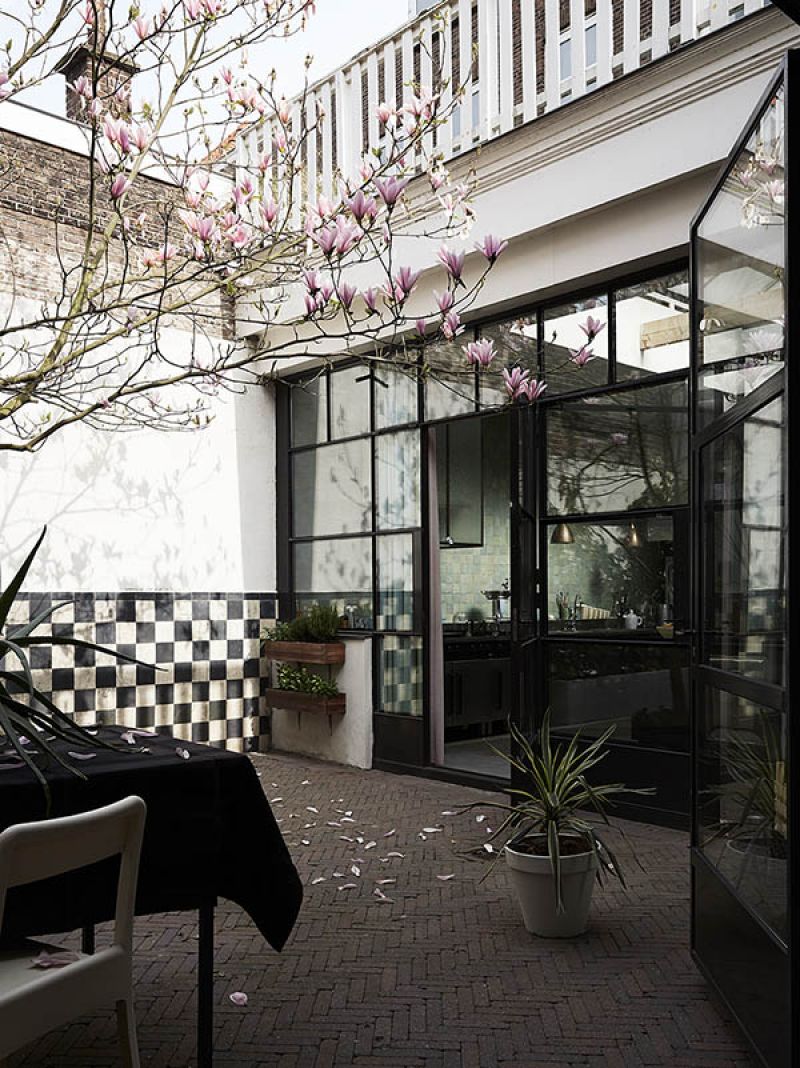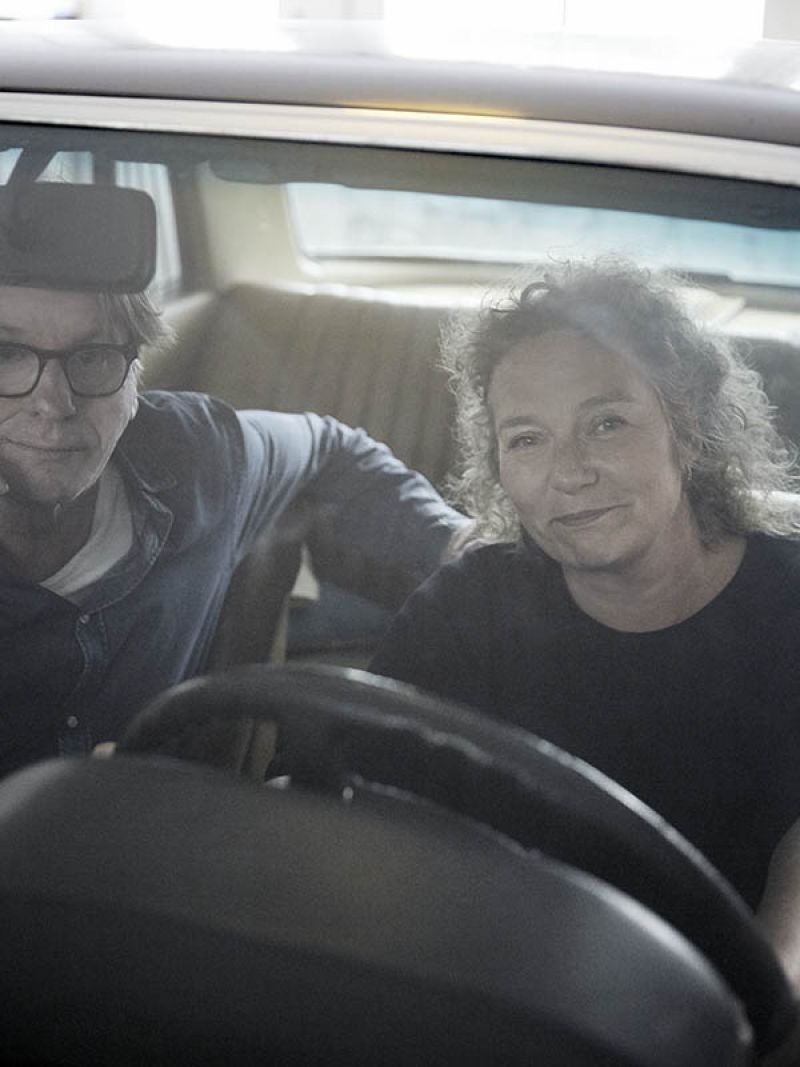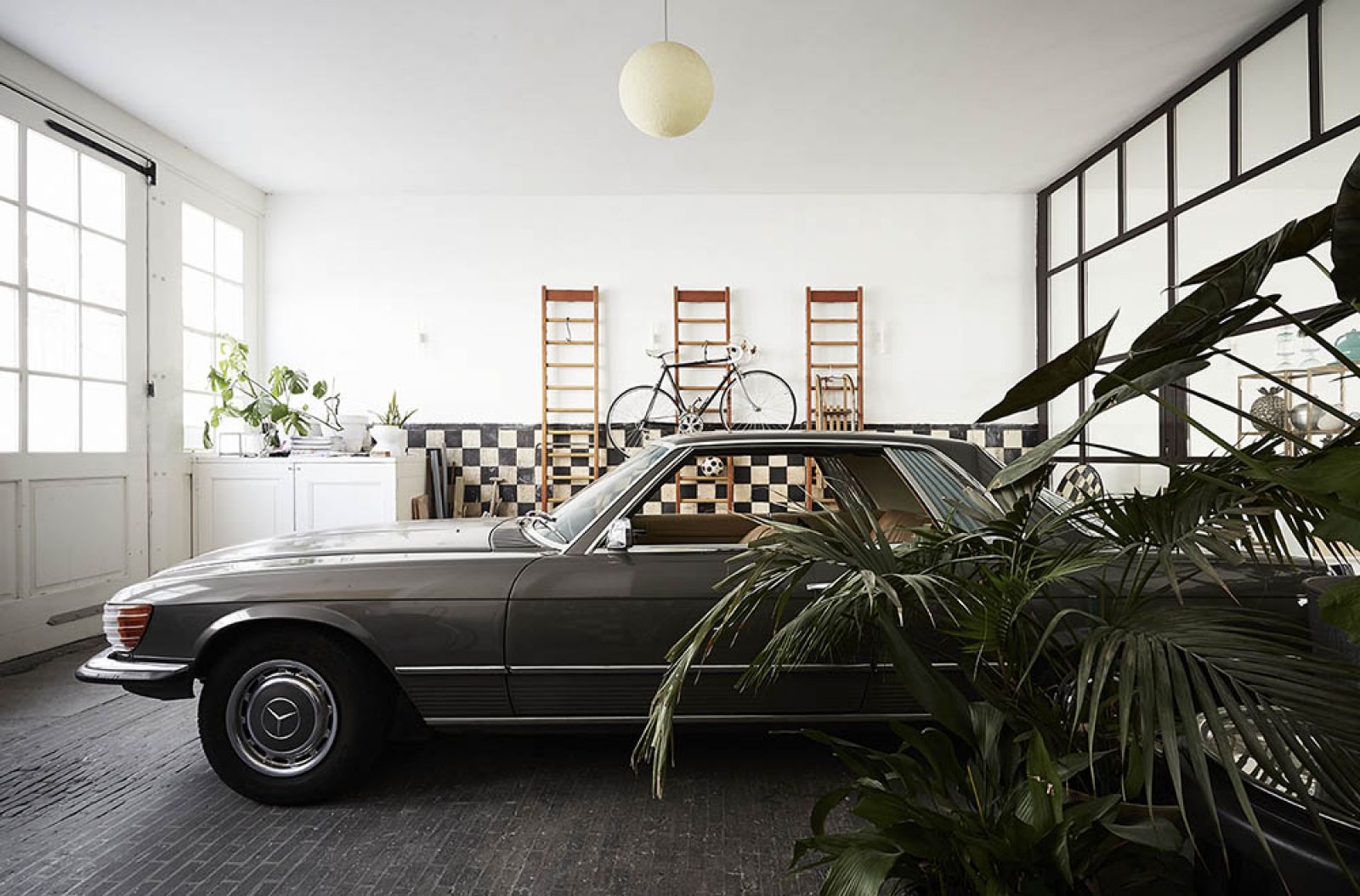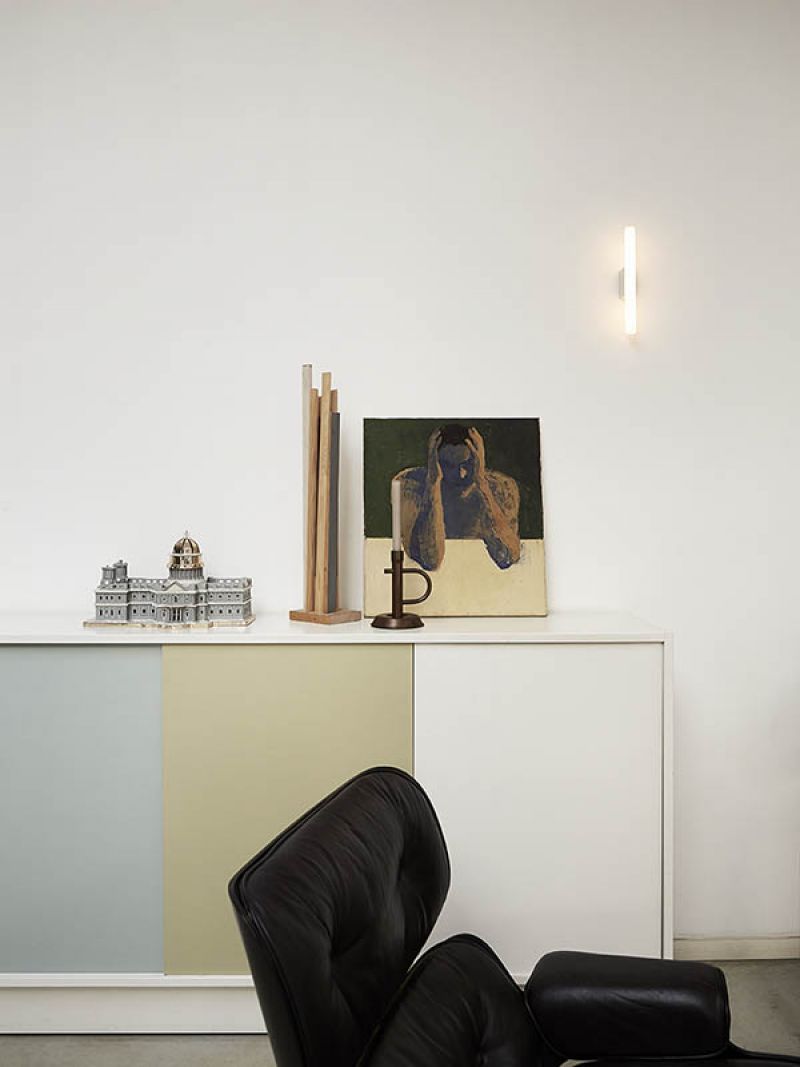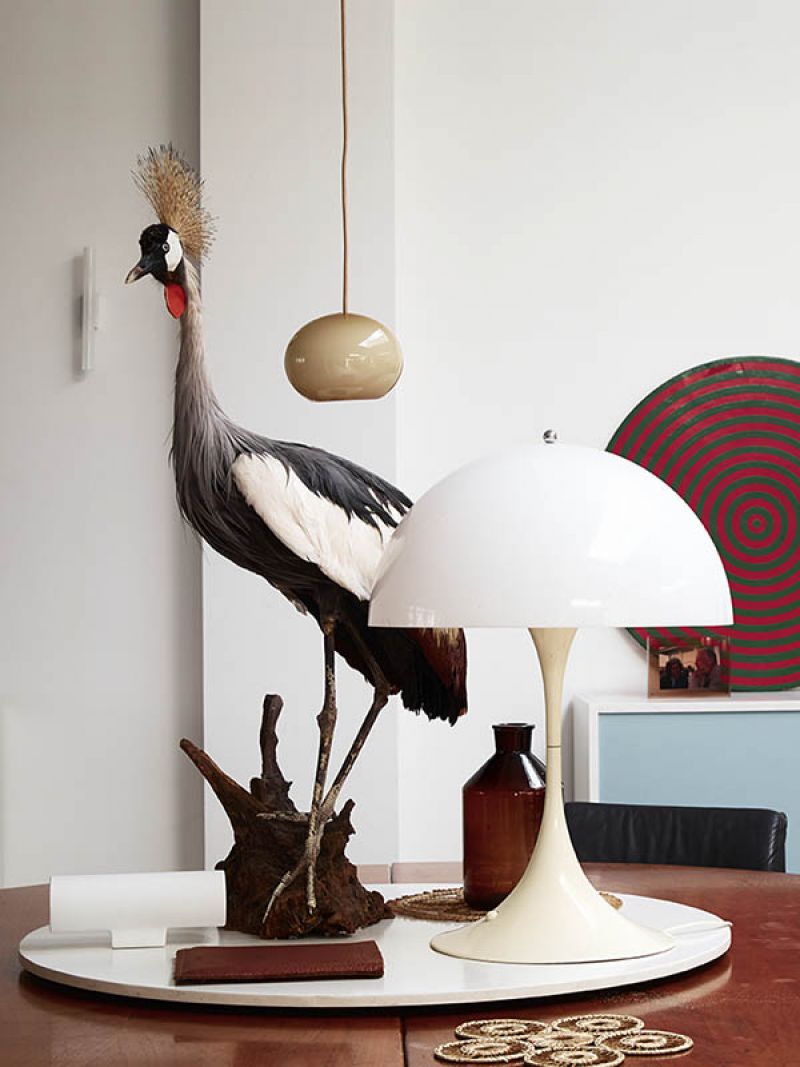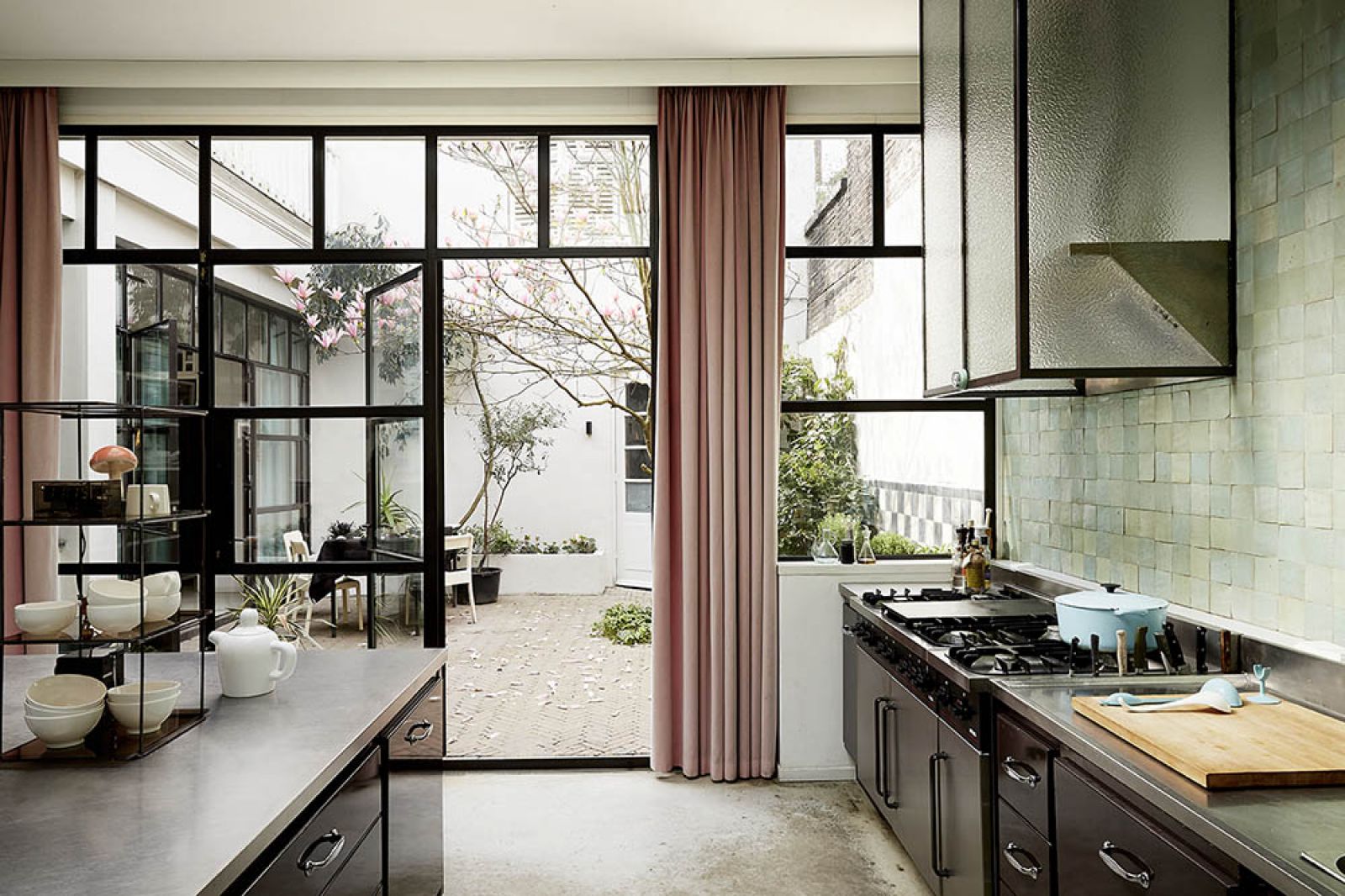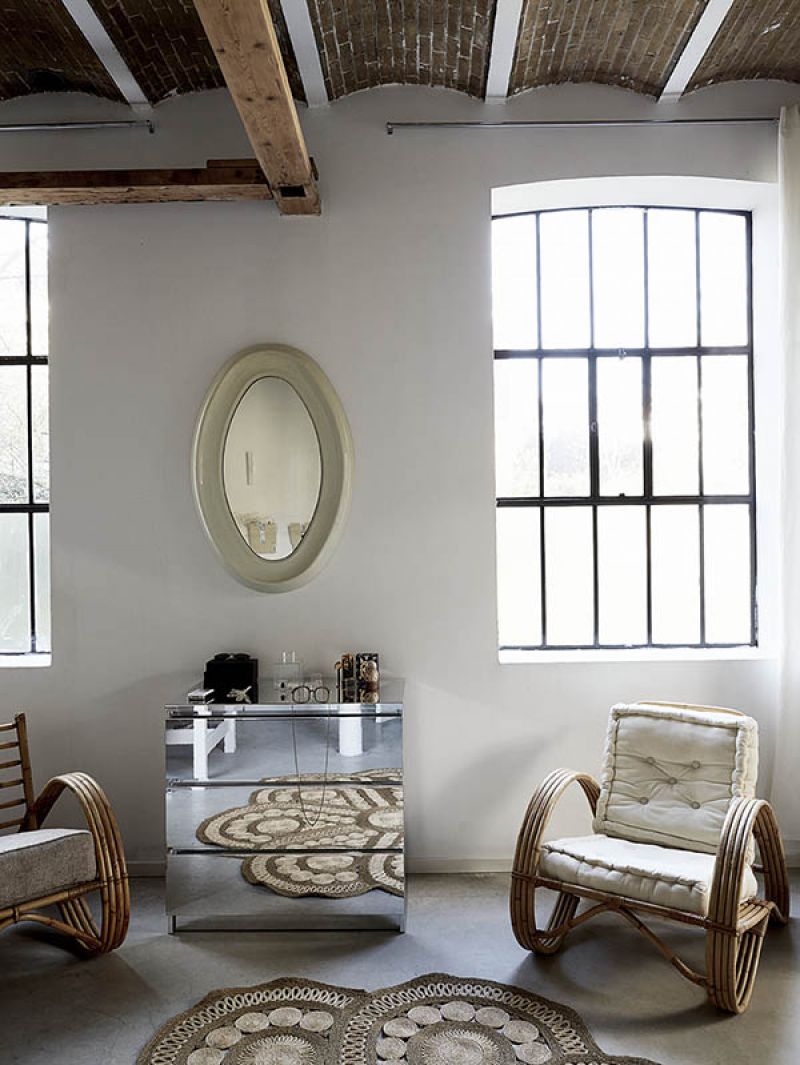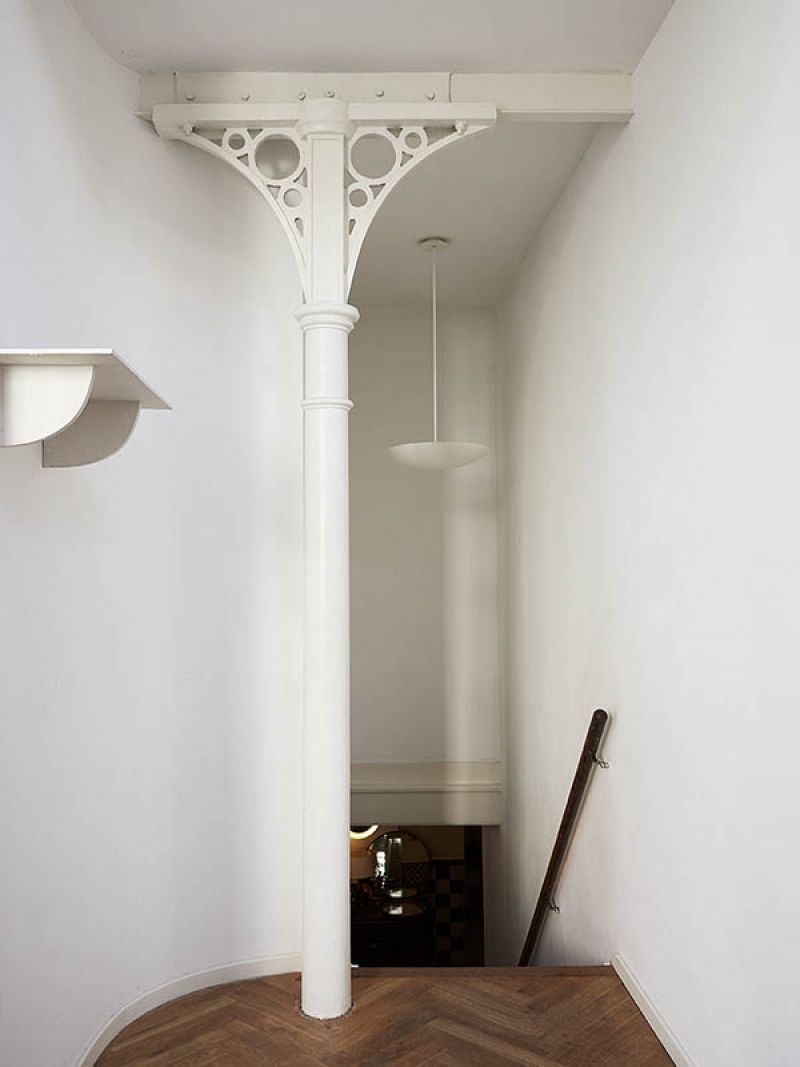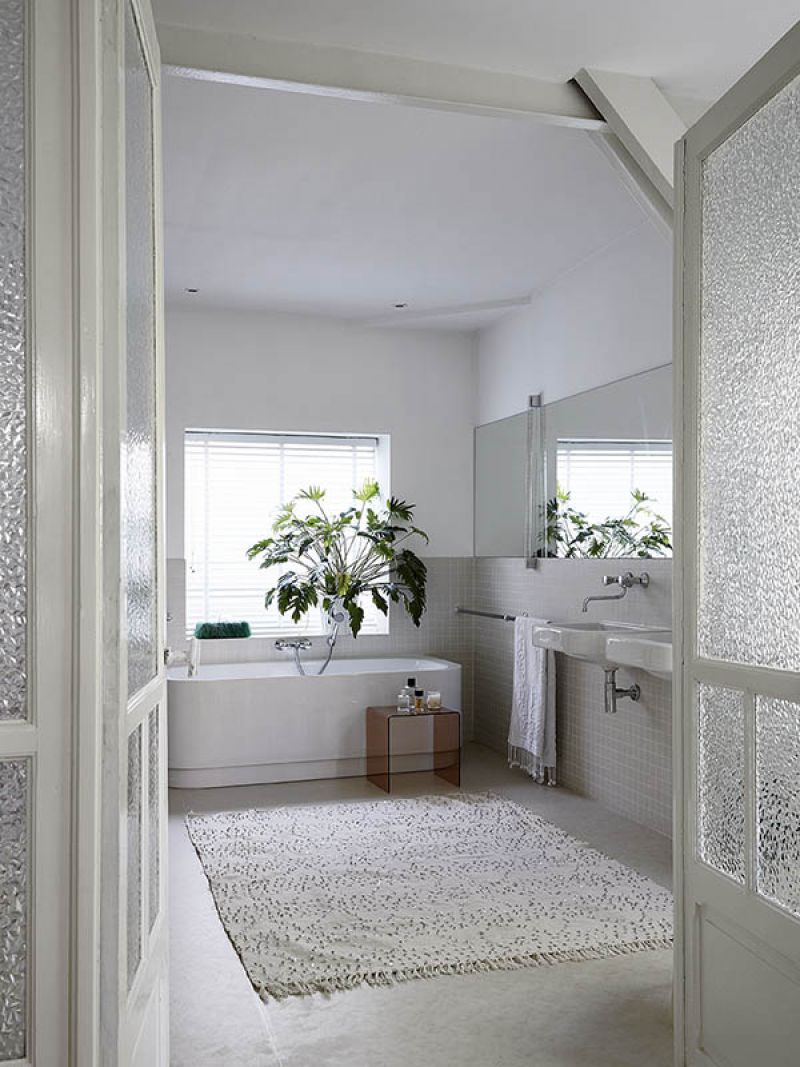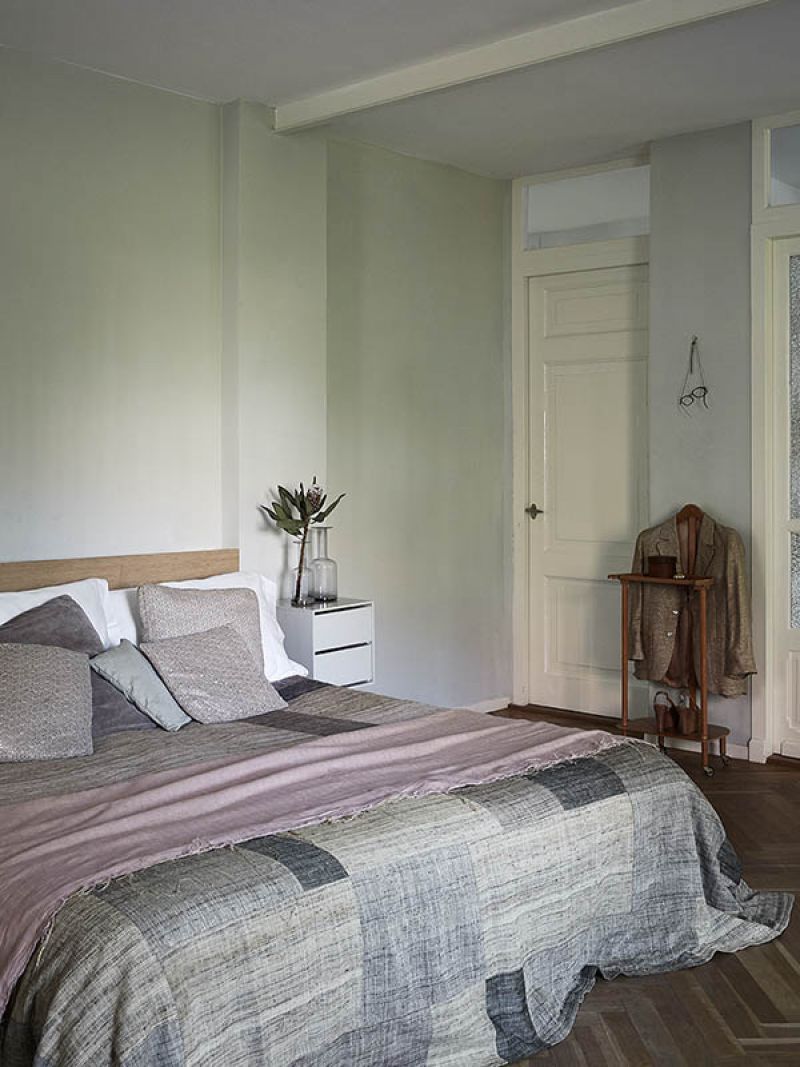Luck and lots of patience
The same method was used in acquiring pieces of furniture and art for the house. The interior is an eclectic mix of family heirlooms, favourite designs that were hunted down online as well as lucky finds. Hessing: ‘Years ago, I was working at the V&D department store head office when they were refurbishing. They were throwing out all their 1960s furniture, including these Eames bucket chairs. I was quite happy to take them off their hands…’ The Eileen Gray sofa required a lot of patience to find though: ‘I’ve always loved the design of this piece, even as a young girl. One of my childhood friends remembered and called me to say that he had seen one for sale when we were in the middle of renovating. I didn’t have time to go round to look at it, so I just bought it on spec, hoping it was the real thing. When it arrived we just left it wrapped up because everything was covered in dust. It wasn’t until we had finished the house that I had a proper look at it. Luckily, it turned out to be an original.’
The enormity of the space and their love for entertaining have led Hessing and Lauwen to opening their house for visitors on a frequent basis. Not only do they regularly host corporate and private dinners, their house is also a well-loved destination during the annual Designkwartier Den Haag festival. For their ‘week-only treasure hunt’ they move most of their furniture elsewhere and fill the living area with vintage and new furniture, art and design. For one week, Mary is the general manager of their department store and Toon runs a café from their kitchen, while their daughters run the till.
The house acted as a catalyst for their professional lives. Not long after it was featured in Eigen Huis & Interieur, Hessing was appointed editor-in-chief of the magazine. Since then, the couple have started WOTH media and the dairy now houses the editorial staff of their enterprise, ‘The house is our own Wonderful thing; a place to treasure and be surprised by every day of the year.’
